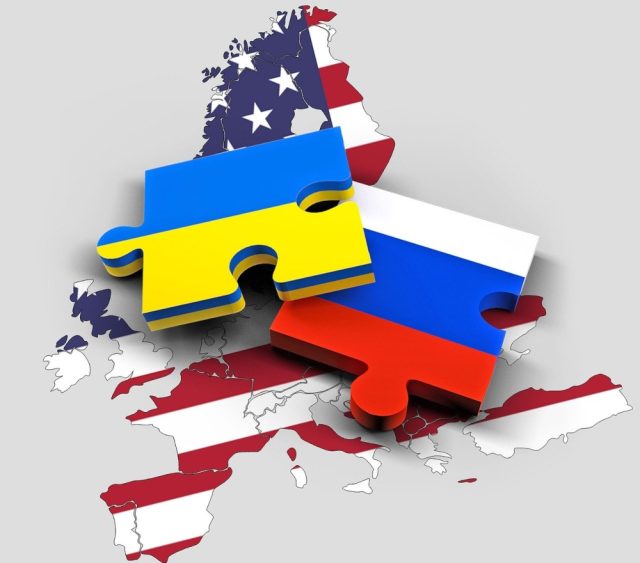
The war in Ukraine, which began in February 2022 with the Russian invasion, continues to represent the main geopolitical battleground at this historical juncture. After more than three years of conflict, the frontlines have consolidated into a precarious balance, marked by military and diplomatic tensions. In this context, US foreign policy has demonstrated a clear shift in pace over the course of this year. The Trump administration, which returned to the White House with the promise of ending the “endless conflicts” and reestablishing pragmatic American supremacy, is shifting its posture toward Moscow and Kiev. The recent cancellation of the planned meeting in Budapest between Donald Trump and Vladimir Putin is emblematic of this new phase. It is not simply a tactical decision, but a political signal that highlights Washington’s desire not to grant Russia room for diplomatic maneuvering without concrete results. Trump’s statement that he does not wish to “waste time” on fruitless talks epitomizes a growing impatience toward a partner perceived as resistant to compromise.
FROM PERSONAL DIPLOMACY TO REALPOLITIK
In the past, Trump had repeatedly expressed his belief that his personal relationship with Putin could facilitate a rapid agreement to cease hostilities. This strategy based on individual diplomacy, however, clashed with the rigidity of Russia’s positions and the complexity of a conflict that transcends the bilateral dimension. The evolution of recent months demonstrates a shift from an informal and personal approach to a more structured one, aimed at reintroducing institutional mediation and the involvement of allies. The decision to postpone the Budapest summit comes after a period of diplomatic tension culminating in the failed telephone conversation between Secretary of State Marco Rubio and Russian Foreign Minister Sergey Lavrov. Moscow’s intransigence, rejecting the idea of an immediate ceasefire, has convinced the White House of the need for a more cautious stance. This shift, however, does not imply abandoning the goal of mediation, but rather redefining the timeframe and conditions for achieving it.
IMPLICATIONS FOR EUROPE AND RELIEF FOR WESTERN PARTNERS
The cancellation of the summit prompted relief among key European leaders. France, Germany and the United Kingdom feared that a rushed meeting could legitimize Russian positions or put undue pressure on Ukraine to accept territorial concessions. The prospect of an agreement that would entail the permanent loss of part of Donbass or Crimea was unanimously rejected by Brussels, which continues to support the line of Ukrainian territorial integrity. This European alignment also reflects the Union’s renewed leadership when it comes to crisis management. Europe, despite being dependent on US military support, is seeking to strengthen its strategic autonomy by coordinating the allocation of frozen Russian assets to fund Ukrainian defense. This choice, although legally controversial, represents an attempt to translate political solidarity into concrete instruments of deterrence. At the same time, Eastern European countries – historically more aligned with Washington – are closely monitoring the swings in American policy. Poland, Romania and the Baltic states, heavily dependent on NATO protection, fear that Trump’s excessive caution could foster a “frozen peace” that would leave Russia room for future aggression.
NATO’S INTERNAL BALANCE AND THE TRUMP FACTOR
Donald Trump’s return to the leadership of the United States has reopened the debate on the Atlantic Alliance’s direction. In recent months, the White House resident has reiterated the need for European allies to increase their military spendings but has also expressed ambiguous positions on the nature of the US commitment in Eastern Europe. The planned meeting with NATO Secretary General Mark Rutte aims to reaffirm the Alliance’s cohesion but does not conceal internal tensions. Member states closest to Trump’s positions appear more inclined to support a swift negotiated solution. In contrast, the governments in Paris and Berlin maintain a more rigid stance, fearing that a premature compromise would weaken the international order based on respect for borders. This divergence of views highlights the ambivalent role of the European Union, torn between the need for unity and the plurality of its national policies. Looking ahead, the EU’s ability to speak with one voice will depend on its capacity to coordinate with Washington without appearing subservient to US political vacillations.
UKRAINE BETWEEN PRESSURE AND DIPLOMATIC RESISTANCE
While international diplomacy seeks a new balance, Ukraine continues to pursue a strategy of armed resistance and negotiation. President Volodymyr Zelensky, while aware of the limits of the counteroffensive, insists on the need to maintain military and diplomatic pressure on Russia. His requests for advanced weaponry, such as Tomahawk missiles, reflect his belief that only continued and qualified support from the West can lead to a stable and non-punitive ceasefire. For its part, the White House is showing caution: its hesitation in providing long-range weapon systems indicates a desire to avoid a direct escalation with Moscow. This caution, however, risks being interpreted as a sign of strategic fatigue, fueling the perception among European partners that America is wavering between its role as security guarantor and that of impatient negotiator.
TOWARDS A NEW ARCHITECTURE OF WESTERN SECURITY
The current moment marks a transition phase for American leadership in the Euro-Atlantic context. Trump’s strategy, which combines rhetoric and operational caution, aims to reaffirm Washington’s central role in decision-making, but also to redistribute burdens and responsibilities among allies. If consolidated, this pragmatic approach could lead to a redefinition of NATO as a more flexible alliance, based on modular cooperation rather than automatic commitments. In such a scenario, the European Union is called upon to play a complementary role, building its own deterrence capacity and coordinating post-war reconstruction and security initiatives. The future of Ukraine, and with it the stability of the continent, will depend on the ability of the United States and Europe to overcome tactical differences and develop a shared vision of continental security.



 Subscribe
Subscribe